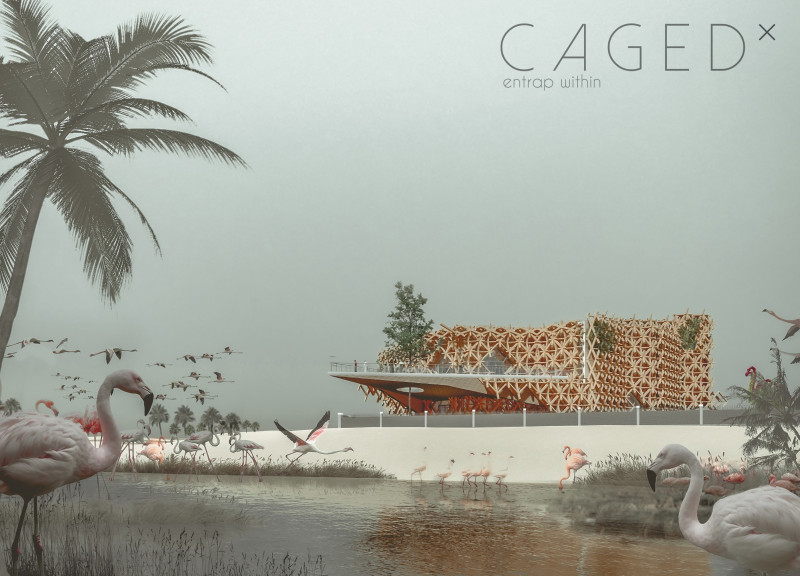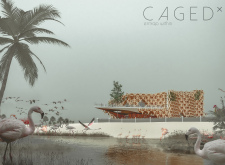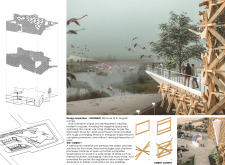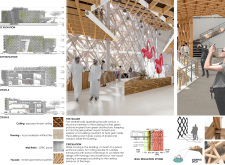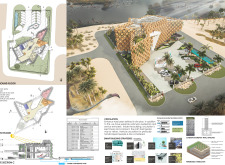5 key facts about this project
"CAGED" serves multiple functions; it is a public space that promotes engagement with nature while providing areas for contemplation and social interaction. The layout encourages exploration through interconnected spaces, designed to evoke a sense of openness while maintaining users' comfort and privacy.
Sustainable architectural materials underpin the project. The primary material is timber, chosen for its durability and thermal performance. Glass Fiber Reinforced Concrete (GFRC) panels create a contemporary aesthetic while ensuring structural integrity. Vitrified tiles cover the floors, offering ease of maintenance and visual continuity. The use of double-skinned glass for the façade enhances energy efficiency, allowing natural light to penetrate while minimizing heat gain. Additionally, green patches throughout the design foster biodiversity and contribute to a healthy ecosystem.
The honeycomb pattern of the façade is one of the project's distinctive elements. This geometric approach allows for natural ventilation and passive cooling, reducing reliance on mechanical systems. The architectural design incorporates smart technologies, such as demand-controlled ventilation, to optimize indoor air quality and comfort. The expansive terraces and panoramic views enhance the user experience, reinforcing the connection to the environment.
Water harvesting systems are seamlessly integrated into the design, showcasing a commitment to sustainability. These systems collect rainwater for reuse, mitigating the building’s environmental impact and promoting responsible water management.
The incorporation of artistic elements, such as flamingo sculptures in key focal areas, enriches the overall experience and ties the building to its avian context. This thoughtful integration of art further blurs the boundaries between architecture and nature, creating spaces that encourage reflection and interaction.
The design of "CAGED" exemplifies a modern approach to architecture that emphasizes sustainability, user engagement, and aesthetic quality. The project's integration of innovative technologies and sustainable materials positions it as a relevant case study in contemporary architectural design. To explore detailed architectural plans, sections, and design ideas, readers are encouraged to delve further into the project presentation for comprehensive insights into its architectural framework and execution.


